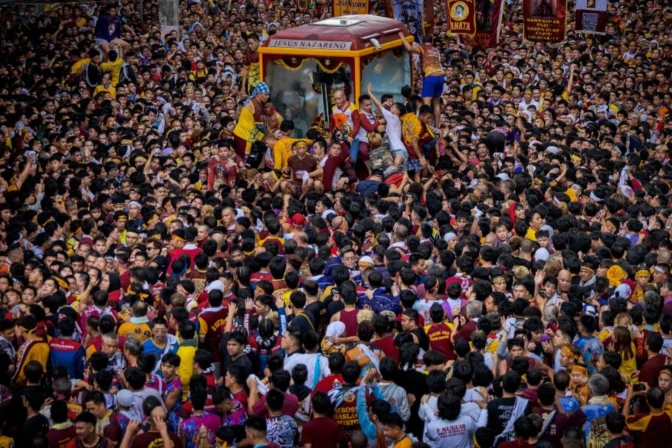The annual Black Nazarene procession in Manila, Philippines, drew hundreds of thousands of enthusiastic pilgrims on January 9, making it one of the largest crowds for a religious devotion in the world. The procession, known locally as “Traslación,” involves devotees carrying a life-size replica of a famous statue of Jesus carrying a black wooden cross around Manila. This year’s event marked a significant return to normalcy after the COVID-19 pandemic disrupted the tradition for several years.
Organizers estimated that around 220,000 people attended Mass before the start of the procession, while at least 800,000 people gathered at the church on Thursday night. Hundreds of thousands more joined the procession as it passed by, with many devotees going barefoot and some even jumping onto the float to grab onto the cross carried by the statue. The procession is a testament to the Philippines’ deep-rooted Catholic faith, with over 80% of the population declaring themselves Catholic.
A British tourist, Adan Jeffrey, who attended the procession, was amazed by the devotion of the pilgrims. Despite being raised Catholic but now identifying as an atheist, Jeffrey said, “I’ve never seen anything like it… the devotion they have to wait so long to kiss the statue is pretty phenomenal.” The tradition of the Black Nazarene dates back to 1606 when the image of Jesus was brought to the Philippines by missionaries of the Order of the Augustinian Recollects.
The statue, which is enshrined in the Quiapo Church, has survived numerous challenges, including fires, earthquakes, floods, and bombings during World War II. The Quiapo church welcomes thousands of Catholics every day for Mass and confession, and the Black Nazarene procession is a highlight of the country’s religious calendar.



